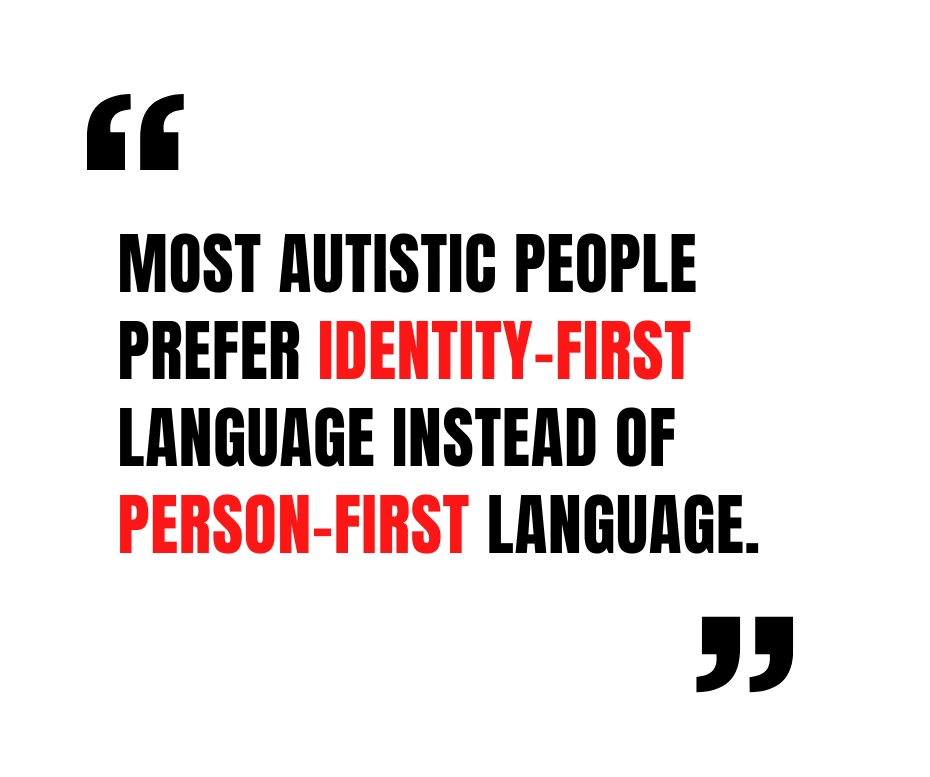Three Things You Probably Didn’t Know About Autistic People
- Home
- Three Things You Probably Didn’t Know About Autistic People

Three Things You Probably Didn’t Know About Autistic People
I’m a late-diagnosed autistic woman — diagnosed as level-one autistic two days before my 39th birthday. In addition to working as a research communications specialist for BC Children’s Hospital Research Institute, I’m the founder, host, and producer of The Other Autism podcast.
As someone who has spent countless hours scouring websites, online bookstores, and scholarly journals for the last six years, I can confidently tell you that most autism-related content focuses on children. But the world is catching up to a long-overlooked reality: generations of autistic individuals have slipped through the diagnostic cracks.
Who are these individuals? They’re adults just now getting diagnosed as autistic in their 30s, 40s, 50s, or even older. And as late-diagnosed autistic people, they have unique experiences and needs that have fueled a surge in autism research focused specifically on adults. Now a growing body of research, along with clinical findings and anecdotal reports, is challenging long-held assumptions about autistic people — including three surprising facts you may not have heard before:
Most autistic people prefer identity-first language instead of person-first language
While it’s considered best practice to use person-first language — like “person with diabetes” instead of “diabetic person” — there are several populations who prefer identity-first language. Autistics happen to be one such population.
In a study by J9 Austin, Loryn Byres, and their team, 93% of autistic participants preferred identity-first language — “autistic person” instead of “person with autism.” This finding was unexpected and not related to the researchers’ main study focus, yet the overwhelming preference could not be ignored. Their findings match research by Corinne Zimmerman, Amanda Taboas, and their team that looked at American autism stakeholders. These researchers found that 87% of autistic adults preferred identity-first language compared to just 13% who preferred person-first language.
In the context of autism, person-first language can subtly imply that autism is a disease or deficit, an unfortunate and undesirable burden that someone has. The preference for identity-first language, on the other hand, is rooted in autistic people viewing autism as an integral part of who they are. From this perspective, autism is a neurotype, not a disorder or illness that needs to be fixed or cured. Autism is a core aspect of one’s identity — like being queer, left-handed, or introverted. Saying “autistic person” acknowledges this inseparability.
Most autistic people would not want to give up their autistic brain and everything it gives them, such as the ability to focus deeply, think outside the box, notice details others miss, and feel strong emotions. Instead, they’re more interested in seeking interventions for conditions commonly seen alongside autism, including epilepsy, hypermobile Ehlers-Danlos syndrome, mast cell activation disorder, postural orthostatic tachycardia syndrome (POTS), developmental coordination disorder, eating disorders, gastrointestinal issues, insomnia, depression, and anxiety disorders.
Lastly, identity-first language in the context of autism fits the social model of disability, which holds that people are primarily disabled by societal barriers, not by their differences. For many, reclaiming “autistic” is a way of displaying their pride and challenging stigma. That said, some still prefer person-first language, especially if they were raised in communities or families that emphasized clinical or medical framing. It’s important to ask each person what they prefer and respect their choice.

Autistic people often experience hyper-empathy — not a lack of it
One of the most enduring myths about autism is that autistic people lack empathy. Popularized in part by researchers such as Simon Baron-Cohen, this empathy-deficit misconception continues to shape how autistic individuals are viewed and how they view themselves.
The latest research, clinical reports, and first-hand accounts paint a very different picture. Many autistic people don’t have less empathy, they often experience too much of it. Many describe feeling “flooded” in social situations, overwhelmed by the emotions of others to the point of physical and mental exhaustion. Some report that they absorb others’ emotions like sponges, finding it hard to filter or separate their own feelings from those of people around them. Still other autistic people report feeling empathy for objects — plants, keepsakes, stuffed animals — suggesting that autistic empathy can be more expansive and nuanced than traditional models allow.
Researchers like Sue Fletcher-Watson and Geoffrey Bird also argue that the idea of autistic people being less empathic is a myth — one so deeply ingrained that even autistic individuals sometimes internalize it. The “double empathy problem,” introduced by Damian Milton, further reframes the issue: rather than lacking empathy, autistic and non-autistic people often struggle to understand each other due to fundamentally different ways of experiencing the social world and expressing their responses to it.
A large number of autistic adults were first identified as being highly sensitive
If you recall hearing about the highly sensitive person (HSP) trait sometime in the 1990s or early 2000s, you’re not alone. The HSP-related books and articles penned by Dr. Elaine Aron and her trainees provide language and validation for people around the world who have felt different their entire lives due to characteristics such as heightened emotional responses, sensory sensitivity, and a tendency towards overstimulation.
For many individuals, identifying as an HSP serves as a kind of roadblock or stopping point in their self-discovery. But those who happen to stumble on information about late-diagnosed or high-masking autism may see strong overlaps between the HSP trait and autism. They might even wonder…Are they describing the same thing?
Dr. Aron has historically rejected the idea that the HSP trait and autism are one and the same. Her website once contained a lengthy FAQ section explaining how they’re different. She wrote that autistic people have narrow, obsessive interests and lack the varied imagination she associates with HSPs — an outdated view that fails to account for the many ways autism can present and the immense progress that has been made in autism scholarship. Dr. Aron also claimed that autistic individuals struggle to read social cues, whereas HSPs do not — failing to acknowledge how high-masking autistic people learn to mimic social behaviours, having spent a lifetime analyzing them.
For years, I personally identified as an HSP and saw no reason to question the label. I even sought help from a therapist who specialized in working with HSPs. It was only later, after being diagnosed as level-one autistic (formerly Asperger syndrome), that I realized the HSP trait is only one small piece of a much larger picture.
My experiences extended beyond sensitivity, for example:
Many late-diagnosed autistic adults recount similar experiences. Their delayed diagnosis also meant delayed access to specialized support, work accommodations, and a deep sense of self-acceptance that they likely never felt before.
The three insights I’ve presented here aren’t just fun facts. They’re cracks in the old story, letting some light in. Autistic people have never been broken — we’ve just been buried under decades of myths, misdiagnoses, and misunderstandings. The truth is, we’ve always been here: feeling deeply, thinking differently, and navigating a world that wasn’t built with us in mind. For those of us diagnosed late, discovering we’re autistic isn’t just a revelation — it’s a reclamation. It’s the moment we stop seeing ourselves as “too much” or “not enough,” and start seeing the beauty in our differences.
- Share
Kristen Hovet
Kristen Hovet is a communications professional and host of The Other Autism podcast. She holds a Master of Health Studies degree, with a health research focus. Through The Other Autism, Kristen explores the latest in autism research and lived experiences. Her own late autism diagnosis and journey as a young adult cancer survivor bring depth to her work. Passionate about amplifying autistic voices, she fosters understanding through evidence-based storytelling and inclusive conversations.
